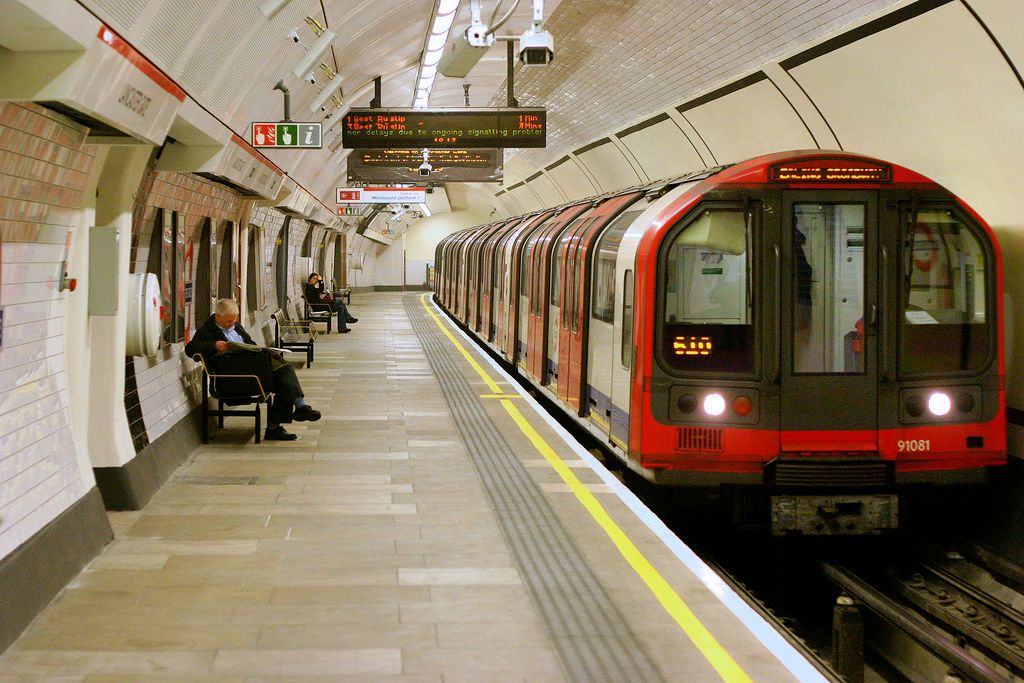

You can train your dog to be picked up and to expect to be picked up by using a pairing word such as ‘up’ or ‘lift’. This technique is the most comfortable way of handling a dog for the both of you. If your dog is a weight that you are comfortable handling, then the best way to pick your dog up is to place one arm in front of their front legs and the other arm should be placed around their back legs, under their bum. Then begin stroking them on their front and hind legs and chest in slow, soothing motions.


You can give them a heads up by crouching down in front of them and letting them sniff the back of your hand. This can scare your dog and may cause them to try to wriggle out of your hold. Many people make the mistake of picking up their dog without any warning. How can I safely pick up my dog on the escalator? However, this may not always be possible as some central London stations experience higher levels of congestion than others. If, after planning your journey, you do find yourself at an escalator-only station, then you must either carry your dog up or down the escalator, or you can request that a member of staff stops the escalator for you outside of rush hours and when the station is not busy. You can plan your journey from A to B using TfL’s journey planner and our handy guide (below) will help you to plan your dog-friendly travel using the lifts and stairs at the station. How do I plan ahead?īy planning ahead, you’ll find that your journey runs more smoothly. Station staff can refuse you entry if your dog is misbehaving.
#In the tube for free#
Your dog can travel for free on the London Underground and London Overground as long as they are kept on a lead or in a crate/carrier. What are TfL’s rules for dogs on transportation?
#In the tube skin#
Can dogs go on escalators?ĭogs, unless trained as an assistance dog, are not allowed on the escalator themselves this can cause serious harm as they can get their fur, nails or skin caught in the moving staircases. Here's our guide to dog-friendly stations.
#In the tube how to#
If you’ve arrived at a tube station only to realise that there are no stairs or lift, you may wonder how to get your very heavy dog to the platform. Luckily, TfL is dog-friendly and our four-legged friends are allowed on all London buses, trains, tubes and trams for free. Stations functioned as air-raid shelters during World Wars I and II, with the tunnels of the unused Aldwych spur line housing artifacts from the British Museum.London’s transport system can seem complex for us humans, so making a journey with your dog can require some forward planning. The London Underground name first appeared in 1908. In 1900 Charles Tyson Yerkes, an American railway magnate, arrived in London, and he was subsequently responsible for the construction of more tube railways and for the electrification of the cut-and-cover lines. Operation began on this first electric underground railway in 1890 with a uniform fare of twopence for any journey on the 3-mile (5-km) line. The original plan called for cable operation, but electric traction was substituted before the line was opened. The tunnels were driven at a depth sufficient to avoid interference with building foundations or public utility works, and there was no disruption of street traffic. In 1866 the City of London and Southwark Subway Company (later the City and South London Railway) began work on the “tube” line, using a tunneling shield developed by J.H. SpaceNext50 Britannica presents SpaceNext50, From the race to the Moon to space stewardship, we explore a wide range of subjects that feed our curiosity about space!.Learn about the major environmental problems facing our planet and what can be done about them! Saving Earth Britannica Presents Earth’s To-Do List for the 21st Century.Britannica Beyond We’ve created a new place where questions are at the center of learning.100 Women Britannica celebrates the centennial of the Nineteenth Amendment, highlighting suffragists and history-making politicians.COVID-19 Portal While this global health crisis continues to evolve, it can be useful to look to past pandemics to better understand how to respond today.Student Portal Britannica is the ultimate student resource for key school subjects like history, government, literature, and more.Britannica Explains In these videos, Britannica explains a variety of topics and answers frequently asked questions.This Time in History In these videos, find out what happened this month (or any month!) in history.#WTFact Videos In #WTFact Britannica shares some of the most bizarre facts we can find.Demystified Videos In Demystified, Britannica has all the answers to your burning questions.Britannica Classics Check out these retro videos from Encyclopedia Britannica’s archives.


 0 kommentar(er)
0 kommentar(er)
